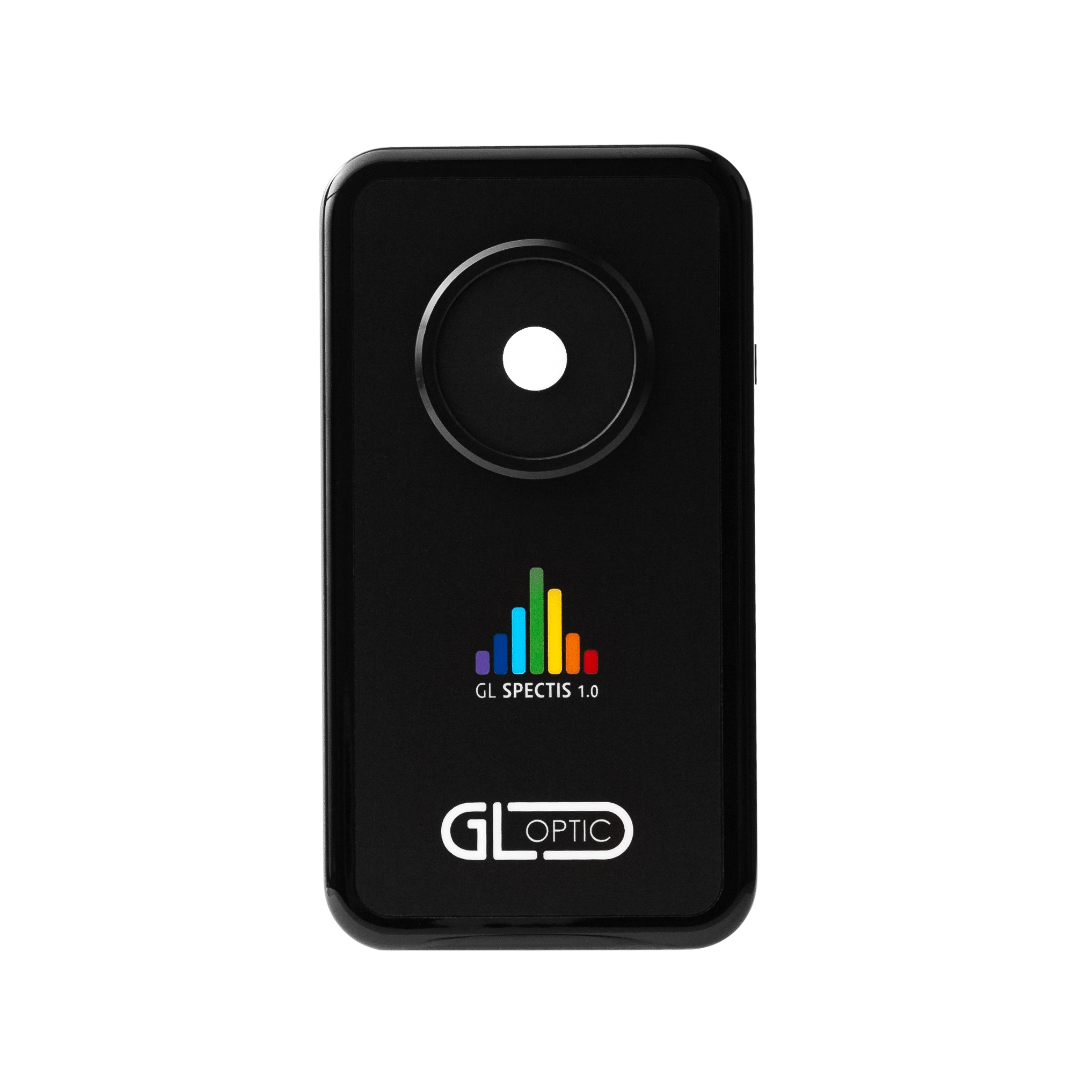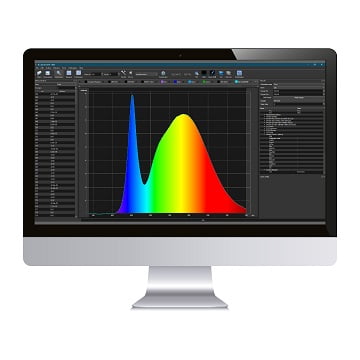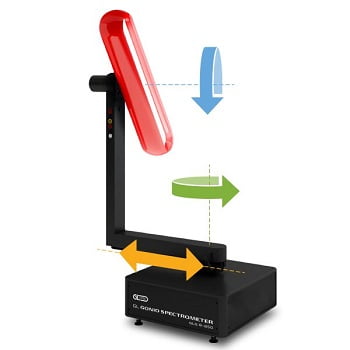GL SPECTIS 1.0
The world’s most flexible USB spectrometer. Exceptional accuracy and repeatability in the palm of your hand.

Precise light measuring technology
Compact yet powerful
Versatile spectroradiometer
Cost effective
GL SPECTIS 1.0 Usage
Handheld spectroradiometer
Based on Hamamatsu sensor
GL SPECTIS 1.0 Features
Ideal for LEDs measurements
Low noise, high speed data
Software corrections
GL SPECTIS 1.0 Metrics
- Lux – irradiance
- Lumen – luminous flux
- CRI – color rendering index according to the CIE
- CCT – the color temperature according to standard CIE
- Color – the chromatic coordinates of the CIE 1931 and CIE 1964
- Fidelity and Gamut – method for evaluating light source color rendition according to TM-30 IES standard
- PAR/PPFD – photosynthetic active radiation measurements for horticulture
- EML – biological effects of light on humans in equivalent melanopic lux
- mWatt – radiation energy
+ many more!
GL SPECTIS 1.0 Specifications
APPLICATION | |
| Natural light, LEDs, halogen light, etc. | |
LED MEASUREMENT | |
| Illuminance [lx]* | 10 lx … 100 000 lx (GL SPECTIS 1.0) |
| 10 lx … 100 000 lx (GL SPECTIS 1.1) | |
| – (GL SPECTIS 1.2) | |
| 5 lx … 50 000 lx (GL SPECTIS 1.3) | |
| Luminance [cd/m2] | Available with optional GL OPTI PROBE |
| Luminous flux [lm] | Available with optional GL OPTI PROBE |
| Luminous intensity [cd] | Calculated in GL SPECTROSOFT |
| Illuminance class | Class B – DIN 5032-7 |
| Class AA – JIS C 1609-1:2006 | |
| Tolerance – cosine response (f2‘) | < 3% (1.9 %) |
| Spectral range** | 340 – 780 nm (UVa – VIS) (GL SPECTIS 1.0) |
| 340 – 780 nm (UVa – VIS) (GL SPECTIS 1.1) | |
| 640 – 1050 nm (VIS – NIR) (GL SPECTIS 1.2) | |
| 340 – 750 nm (UVa – VIS) (GL SPECTIS 1.3) | |
PHOTOMETRY / RADIOMETRY | |
| Sensor | CMOS image sensor |
| Number of pixels | 256 |
| Physical resolution / datapoint interval | ~ 1.7 nm |
| Wavelength reproducibility | 0.5 nm |
| Integration time | 5 ms – 10 s |
| A/D converter | 16 bit |
| Signal-to-noise ratio | 1000:1 |
| Stray light | 2*10 E-3 |
| Optical resolution / FWHM | 10 nm |
| Radiometric accuracy ***/**** | 5% within range 340 – 500 nm |
| 4% within range 500 – 1050 nm | |
| Flicker compensation | ✓ |
| Temperature sensor and dark current compensation | ✓ |
| Uncertainty of color coordinates *** | 0.0015 |
| Automatic accessory detection | ✓ |
GENERAL PROPERTIES | |
| Power supply via USB connector | < 640 mA |
| Operating temperature | 5 – 35°C |
| Dimensions [H x W x D ] | 62 mm x 115 mm x 28,3 mm (with standard diffuser) |
| Weight | 125 g |
| Tripod adapter | ✓ |
INTERFACE & MEMORY | |
| USB | USB 2.0 |
| Measurement result storage | by GL SPECTOSOFT |
| Trigger | Available with GL SPECTIS 1.1 |
| Open collector, minijack 3.5 mm, 3-pin | |
| Data format | XML |
SOFTWARE | |
| Software | Optional GL SPECTROSOFT Basic / Pro / Lab |
ORDERING INFORMATION | |
| Case | ✓ |
| USB cable | ✓ |
More than just a handheld

Illuminance and irradiance
This handheld spectroradiometer is calibrated to provide absolute values of illuminance and color but also provides detailed spectral power distribution and irradiance values [mW/m2]. Use this on optical bench or tripod to create a measurement setup connected to PC.

Luminance and radiance
Available luminance optical probes can be connected and calibrated with this handheld spectroradiometer to measure flat emitting surfaces like displays, screens and back lights. The integrated coding system in all spectrometers automatically downloads the appropriate calibration file and measures [cd/m2]. Check available ADDITIONAL PROBES for Luminance and Illuminance.

Luminous flux of single LEDs

Light intensity distribution
Related products
GL SPECTROSOFT M
GL OPTI SPHERE 500
GL GONIO SPECTROMETER GLG 8-850


